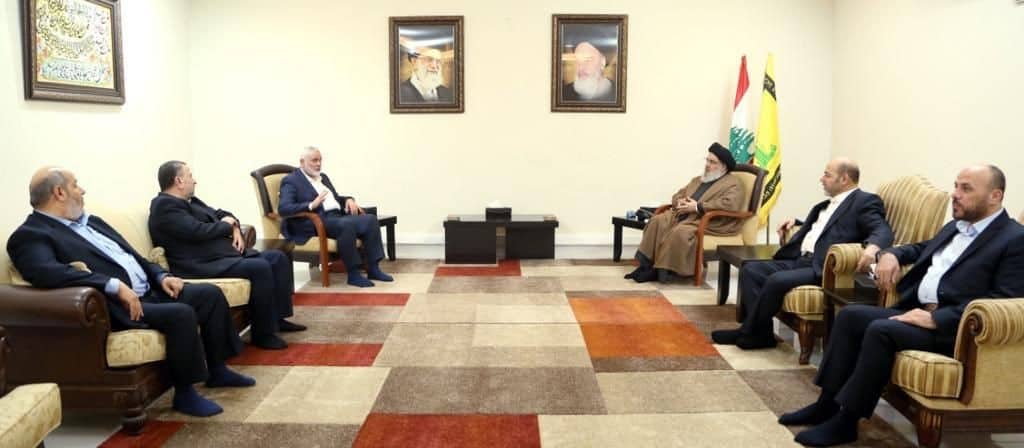
Earlier this week Hamas officials visited Lebanon in an effort to strengthen its long-standing alliance with Hezbollah. High-ranking officials including Ismail Haniyeh, Salah al-Arouri and Khalil al-Hayya met with Hezbollah chief Hassan Nasarallah and Lebanese political officials.
A Hamas statement said the two sides discussed further developing the axis of resistance as a “strategic option” against Israel. Furthermore, political developments and their “repercussions” involving the Palestinian cause were also discussed.
Hezbollah echoed much of what was said by Hamas in a statement published after the meeting. Though the communique added the militant organizations backed by Iran were working towards cooperation between “each parts of the axis to serve its central goal, which is related to Jerusalem, its sanctities and the Palestinian cause.”
While details about the meeting were scant, it’s likely the topic of strengthening Hamas’ military presence in the country was discussed.
Hamas has been working towards expanding its ability to attack Israel from arenas outside of Gaza for some years. While Palestinian organizations have been suspected of being behind assaults from Lebanon in previous years, the rocket strikes since May 2021 appear to forebode a significant security dilemma for Israel due to the reported collaboration between the members of the resistance axis.
Furthermore, attacks against Israel from Lebanon are advantageous for Hamas and gives it plausible deniability. This tactic also shields the Sunni militant organization from potential retaliation by the IDF due to the presence of Hezbollah in the country.
One of the goals of the Iranian-led resistance axis is to unify its members and build its military assets on Israel’s three fronts: Gaza, Lebanon and Syria. Hamas strengthening its alliance with Hezbollah in Lebanon and a purported Syrian-Hamas rapprochement signals a strengthening of the resistance axis, thus adding to Israel’s strategic security dilemma in countering its foes.







